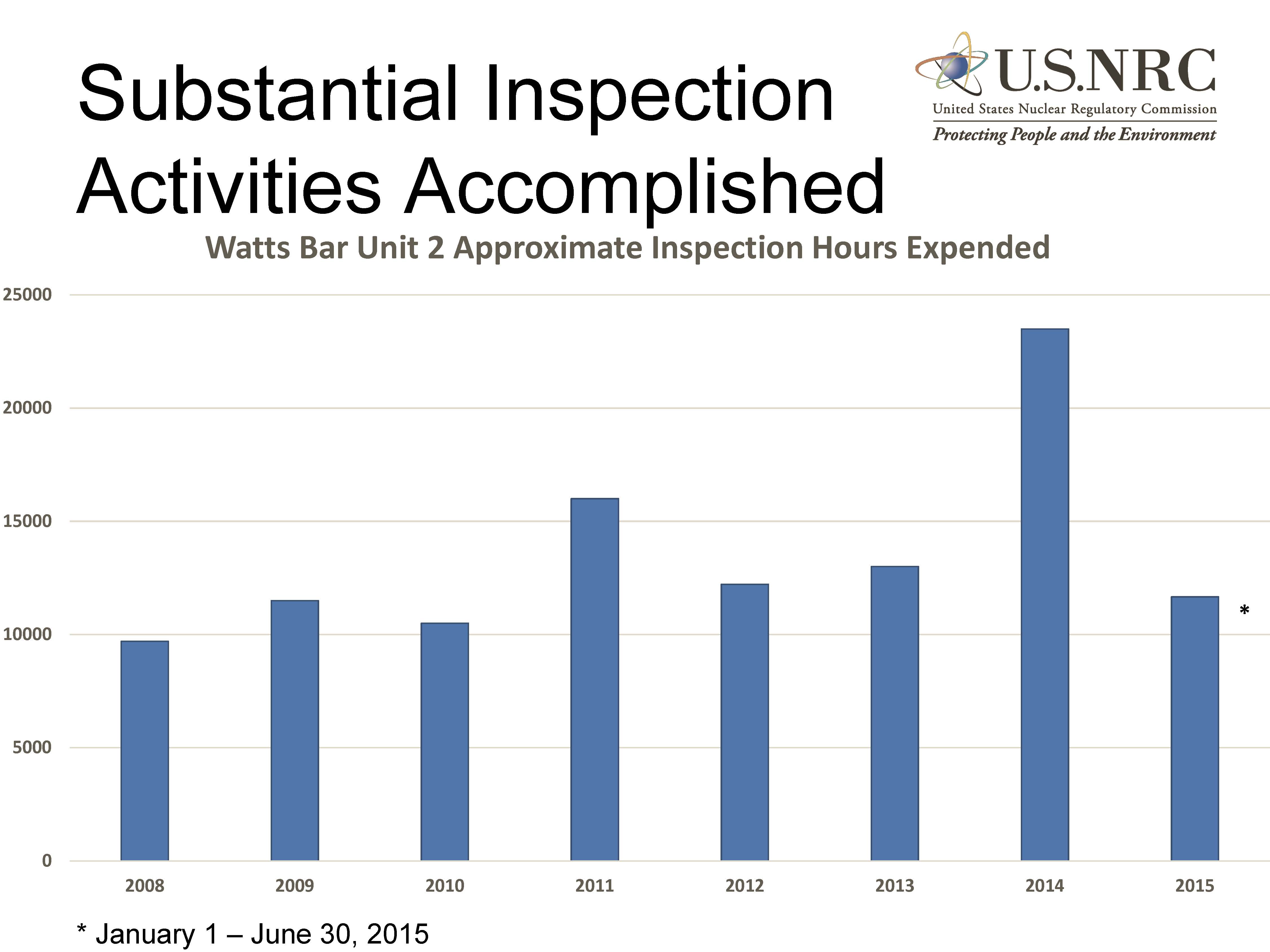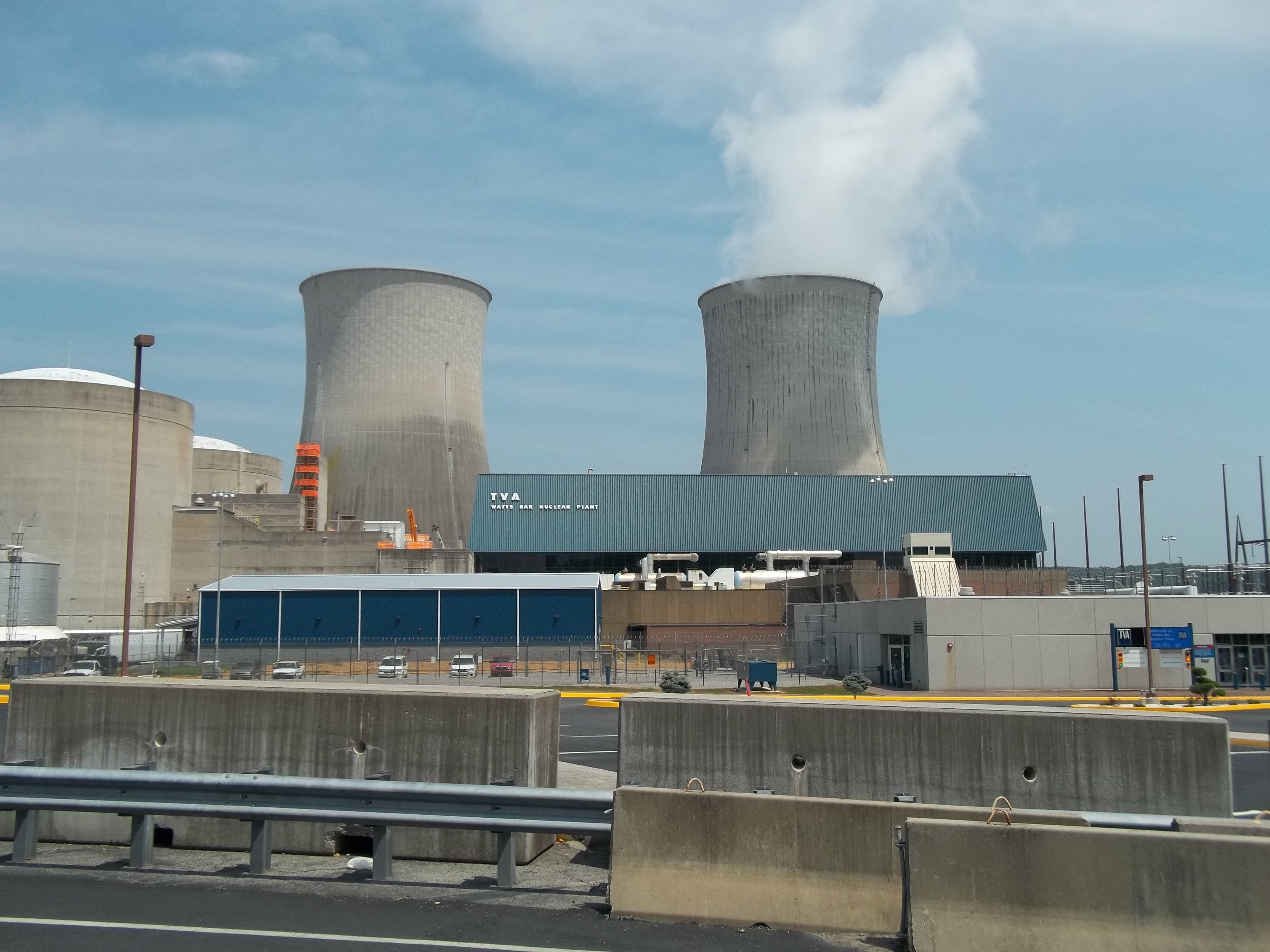The Nuclear Regulatory Commission (NRC) issued an operating license today to the Tennessee Valley Authority (TVA) for Watts Bar Unit 2. The Atomic Energy Commission, NRC’s predecessor, issued TVA the construction permit for Watts Bar Unit 2 on January 23, 1973. TVA has suspended construction on Unit 2 several times over the years—Watts Bar Unit 1 was completed and licensed by the NRC in February 1996.
The issuance of the operating license permits TVA to load fuel into the Unit 2 reactor vessel and conduct low power testing. Following successful completion of those tasks, TVA can proceed to additional tests at power plateaus up to the reactor’s rated power level.
The issuance of the operating license is a milestone in that the NRC conducted extensive inspections at Watts Bar Unit 2 before determining it was ready for an operating license. The typical operating reactor receives 5,000 to 6,000 inspection hours of oversight from the NRC each year—in 2014 alone, Watts Bar Unit 2 received nearly four times that inspection effort (Fig. 2). TVA expended considerable effort preparing for these NRC exams.

Fig. 2 (Source: NRC)
During the summer of 2014, TVA established a Community Action Panel focused on its Unit 2 efforts. I was among nearly two dozen members of this panel. TVA’s senior managers met with the panel about every six weeks to update us on activities and answer our questions. TVA also invited the panel to tour the plant, observe an emergency plan exercise, and monitor the operators responding to a simulated accident on the Watts Bar control room training simulator.
It was apparent during the panel meetings that TVA was very aware that focusing on Unit 2’s completion could be a distraction that could cause the operating performance on Unit 1 to decline. Beyond mere recognition of this potential, TVA took measures to guard against it happening. But TVA did more than erect a firewall between Unit 1 and Unit 2 that would protect against distractions but could introduce the silo effect where the right hand doesn’t know what the left hand is doing. TVA’s measures included appropriate cross-communication between the staffs working on the two units to also protect against undesired interferences. TVA was able to complete tasks on Unit 2 and obtain the operating license from the NRC without compromising performance on Unit 1.
The issuance of the operating license marks the end of the construction phase. TVA has reason to celebrate the construction phase being completed. Much hard work went into achieving this milestone. The issuance of the operating license marks the beginning of the operating phase. That phase also requires hard work to achieve and sustain successful performance.
The operating license demonstrated that TVA could meet the challenge of completing construction, but it does not guarantee that the challenge of successful operating performance will also be successfully met. With the same management and staff attention to detail demonstrated in the former, TVA should be equally successful on the latter.

